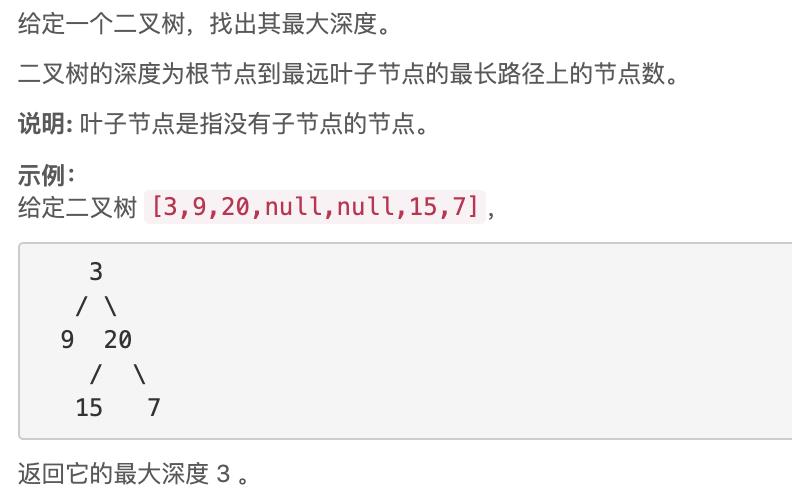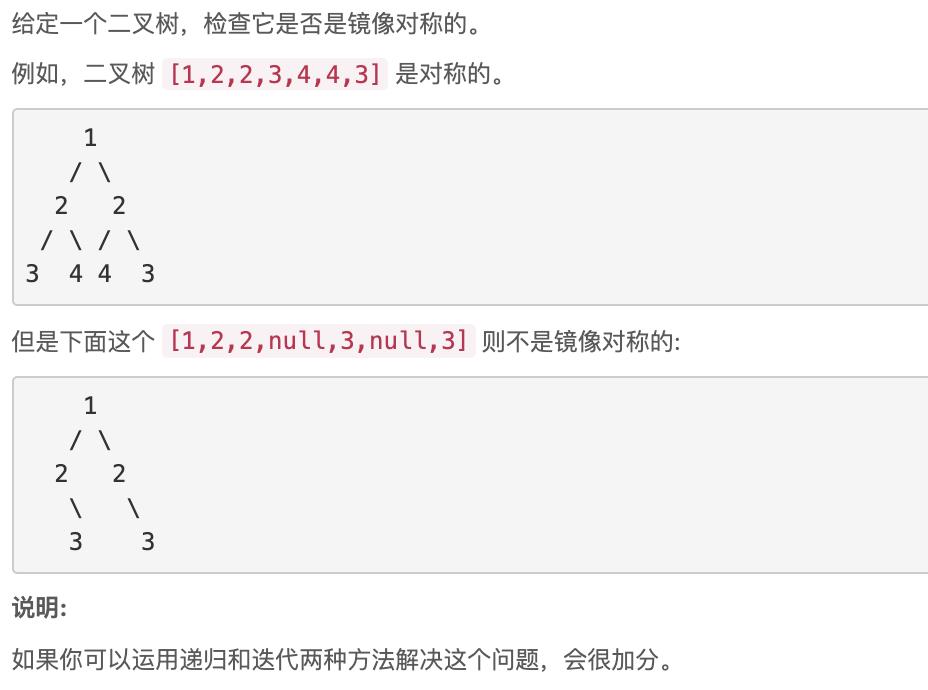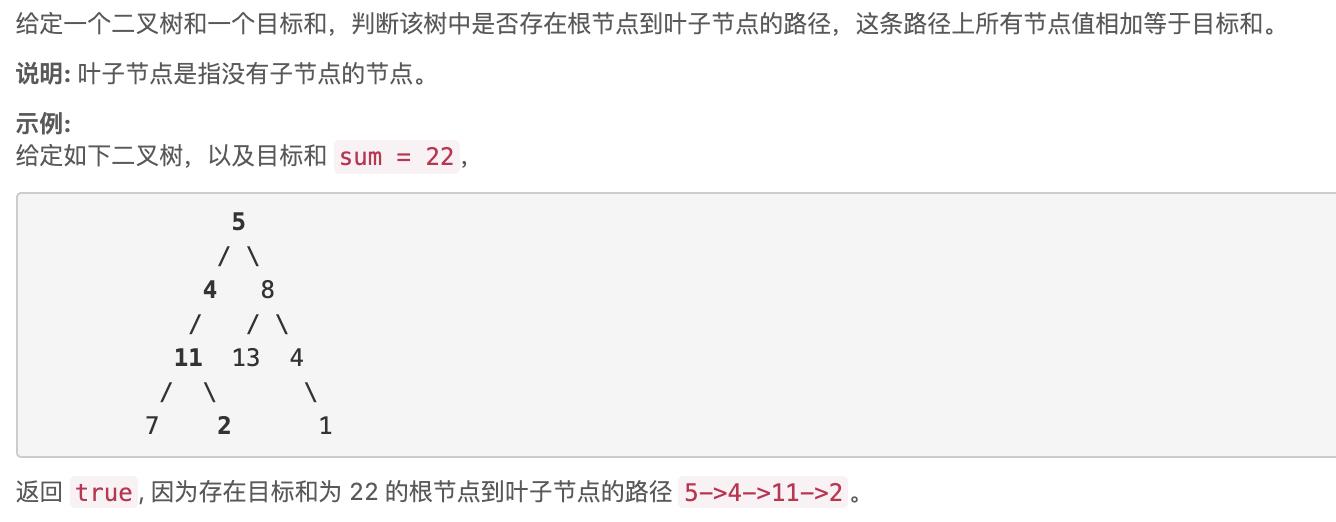运用递归解决二叉树相关问题
Posted 却把清梅嗅
tags:
篇首语:本文由小常识网(cha138.com)小编为大家整理,主要介绍了运用递归解决二叉树相关问题相关的知识,希望对你有一定的参考价值。

在之前的章节中,我们已经介绍了如何解决树的遍历问题。我们也已经尝试过使用递归解决树的为 前序遍历 、 中序遍历 和 后序遍历 问题。
事实上,递归 是解决树相关问题的最有效和最常用的方法之一。本节中,我们将会介绍两种典型的递归方法。
解决方案
本小节内容节选自 LeetCode:运用递归解决树的问题 .
递归是解决树的相关问题最有效和最常用的方法之一。
我们知道,树可以以递归的方式定义为一个节点(根节点),它包括一个值和一个指向其他节点指针的列表。 递归是树的特性之一。 因此,许多树问题可以通过递归的方式来解决。 对于每个递归层级,我们只能关注单个节点内的问题,并通过递归调用函数来解决其子节点问题。
通常,我们可以通过 自顶向下 或 自底向上 的递归来解决树问题。
“自顶向下” 的解决方案
自顶向下 意味着在每个递归层级,我们将首先访问节点来计算一些值,并在递归调用函数时将这些值传递到子节点。 所以 自顶向下 的解决方案可以被认为是一种 前序遍历。 具体来说,递归函数 top_down(root, params) 的原理是这样的:
- 1、在
null值的情况下返回指定的值; - 2、如果有必要,更新
answer; - 3、
left_ans = top_down(root.left, left_params); - 4、
right_ans = top_down(root.right, right_params); - 5、如果有必要返回
answer。
“自底向上” 的解决方案
自底向上 是另一种递归方法。 在每个递归层次上,我们首先对所有子节点递归地调用函数,然后根据返回值和根节点本身的值得到答案。 这个过程可以看作是 后序遍历 的一种。 通常, 自底向上 的递归函数 bottom_up(root) 为如下所示:
- 1、在
null值的情况下返回指定的值; - 2、
left_ans = top_down(root.left, left_params); - 3、
right_ans = top_down(root.right, right_params); - 4、返回
answer。
例题
1、二叉树的最大深度
题目描述

解题思路及实现
1、自顶向下
class Solution
private int answer = 0;
public int maxDepth(TreeNode root)
max_depth(root, 0);
return answer;
private void max_depth(TreeNode root, int depth)
if (root == null) return;
if (root.left == null && root.right == null)
answer = Math.max(depth, answer);
return;
max_depth(root.left, depth + 1);
max_depth(root.right, depth + 1);
2、自底向上
class Solution
public int maxDepth(TreeNode root)
return max_depth2(root);
private int max_depth2(TreeNode root)
if (root == null)
return 0;
int leftDepth = max_depth2(root.left) + 1;
int rightDepth = max_depth2(root.right) + 1;
return Math.max(leftDepth, rightDepth);
2、对称二叉树
题目描述

解题思路及实现
这道题笔者的思路是迭代,后来发现非常困难,看了题解才发现,将同一个树作为2次参数分别放入递归函数进行递归,确实是一个很棒的思路。
class Solution
public boolean isSymmetric(TreeNode root)
return isMirror(root, root);
private boolean isMirror(TreeNode t1, TreeNode t2)
if (t1 == null && t2 == null) return true;
if (t1 == null || t2 == null) return false;
return t1.val == t2.val && isMirror(t1.left, t2.right) && isMirror(t1.right, t2.left);
3、路径总和
题目描述

解题思路及实现
比较简单,标准的dfs进行递归:
class Solution
public boolean hasPathSum(TreeNode root, int sum)
return dfs(root, 0, sum);
private boolean dfs(TreeNode root, int currentSum, int target)
if (root == null)
return false;
int sum = currentSum + root.val;
if (root.left != null || root.right != null)
return dfs(root.left, sum, target) || dfs(root.right, sum, target);
else
return sum == target;
参考 & 感谢
文章绝大部分内容节选自LeetCode,概述:
- https://leetcode-cn.com/explore/learn/card/data-structure-binary-tree/3/solve-problems-recursively/11/
例题:
- https://leetcode-cn.com/problems/maximum-depth-of-binary-tree/
- https://leetcode-cn.com/problems/symmetric-tree/
- https://leetcode-cn.com/problems/path-sum/
关于我
Hello,我是 却把清梅嗅 ,如果您觉得文章对您有价值,欢迎 ❤️,也欢迎关注我的 博客 或者 GitHub。
如果您觉得文章还差了那么点东西,也请通过关注督促我写出更好的文章——万一哪天我进步了呢?
以上是关于运用递归解决二叉树相关问题的主要内容,如果未能解决你的问题,请参考以下文章